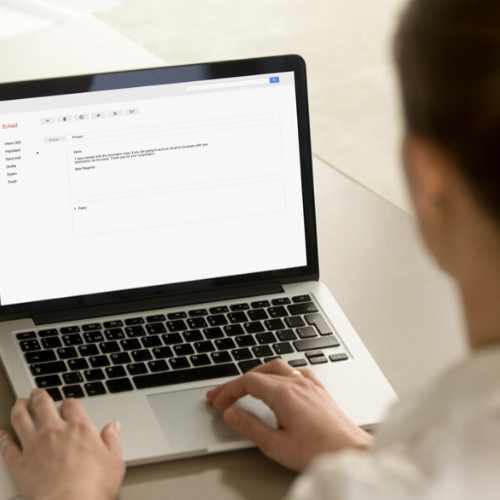The Role of Email in the Modern Construction Workplace
0%

In today’s modern era, it might feel like the email is becoming a bit of antiquated technology – especially as powerful new mobile solutions and applications become available to connect and communicate with each other. Yet, email still plays a vital role in business and is an especially critical tool when coordinating a large project like modernizing technology or communicating a significant operational change throughout the organization.
However, even as email maintains its stronghold in the workplace, everyone uses — and responds to — email a little differently. This can lead to serious questions about the effectiveness that email communications have. For instance, does it feel like you are sending and receiving an enormous amount of emails during the week? Do you often find them to be too long, too short, not to the point, hostile or confusing? Is the tone and intent ever misinterpreted?
Remember, emails aren’t meant to keep you from picking up the phone, walking to someone’s desk to have an actual back-and-forth conversation or leveraging more modern technologies and applications to communicate with peers on levels more direct and relevant to them.
Email is, however, a powerful tool for recapping conversations, quick questions and/or coordinating meeting times and locations. We all intend to have our emails regarded and remain on our audience’s priority reading list, and getting there often takes a deliberate approach.
If you want your emails to be read and regarded with credibility, follow these six basic email tips:

Tip 1: Know the purpose of your email
We all use email to communicate. The most impactful emails tend to be those that initiate that communication and fall under three categories. Is your email meant to?
- Recap a conversation
- Ask a quick question
- Coordinate an in-person meeting or phone call
Note: If it’s for anything else be sure have an actual conversation first. Then use the remaining tips listed below.
Tip 2: Know your audience
Before you start any email exchange – Does the person you are about to email like to use email for this type of communication? Have you ever asked them what type of communication they prefer? If email is not the best method, find out how they best communicate and see if it makes better sense to engage them via these methods. For instance, project managers in the field might prefer all project communications come through a specific software platform. While executive teams might prefer informational dashboards or reports. Email might work best for coordinating communications with vendors, but in-office quick conversations might be best suited for in-person conversations or instant messaging programs.
Tip 3: Create an engaging subject line
When emails are the most effective method, the subject line is arguably the most prominent part as it can determine whether your email will be read. Take the time to write a meaningful subject line, one that is brief and relevant to the content of your email. The subject line will also help people more easily go back to search for your email if necessary.
Tip 4: Make it easy to read
Keep your message concise and to the point. Use bullets where you can. Add spaces between paragraphs and bullets. Avoid using all capital letters, slang, emotional icons, unique abbreviations and excessive punctuation.
As a reminder avoid sending emails when you might be feeling any type of negative emotion. Those negative emotions can spin the way you write. What you send cannot be taken back.
Tip 5: Understand the 'To,' 'CC' and 'BCC' fields
The general rule of thumb is that recipients in the To field are expected to reply or follow up on the email, while those in the CC (carbon copy) and BCC (blind carbon copy) fields are not. Add people to each field purposefully. Your goal should be to limit the numbers, not to fill up others inboxes so everyone knows you’re on top of your job.
- To field:Enter the direct addressees of your email in the “To” field. These are the people to whom you are writing directly.
- CC field: Enter anyone you want to keep in the loop but are not addressing directly in the email. Those included in the “CC” field are being sent a copy of your email as an FYI.
- BCC field: The “BCC” field is used when you want to loop someone into an email privately. The email is sent to all, but the recipients in the “To” and “CC” fields do not see that the email was also sent to others included in the “BCC” field.
Tip 6: Know when to pick up the phone or meet in person
If, at any point, your email exchange turns into a back-and-forth exchange, pick up the phone immediately and have a conversation. It will be easier to resolve the issue through a phone or in-person conversation meeting with the recipient.
At the end of the day, email is still a valuable and vital tool for the construction organization to leverage. Technology innovations continue to evolve the way we communicate though, we could easily see a shift to where we are less and less reliant on emails. Contractors that are modernizing their technology stacks to include new cloud-based, integrated business and project collaboration solutions are already realizing this first-hand.
For help with successfully launching change initiatives feel free to contact CTP Solutions, LLC at 248-670-1646 or [email protected]


